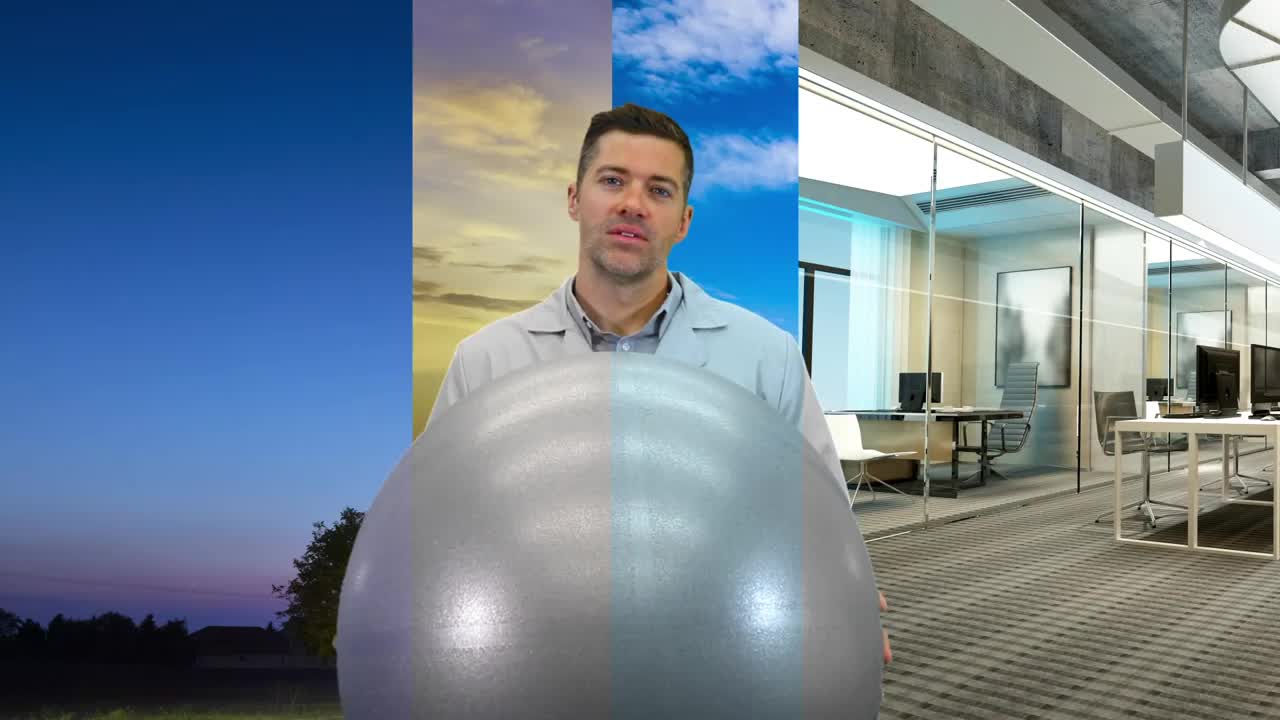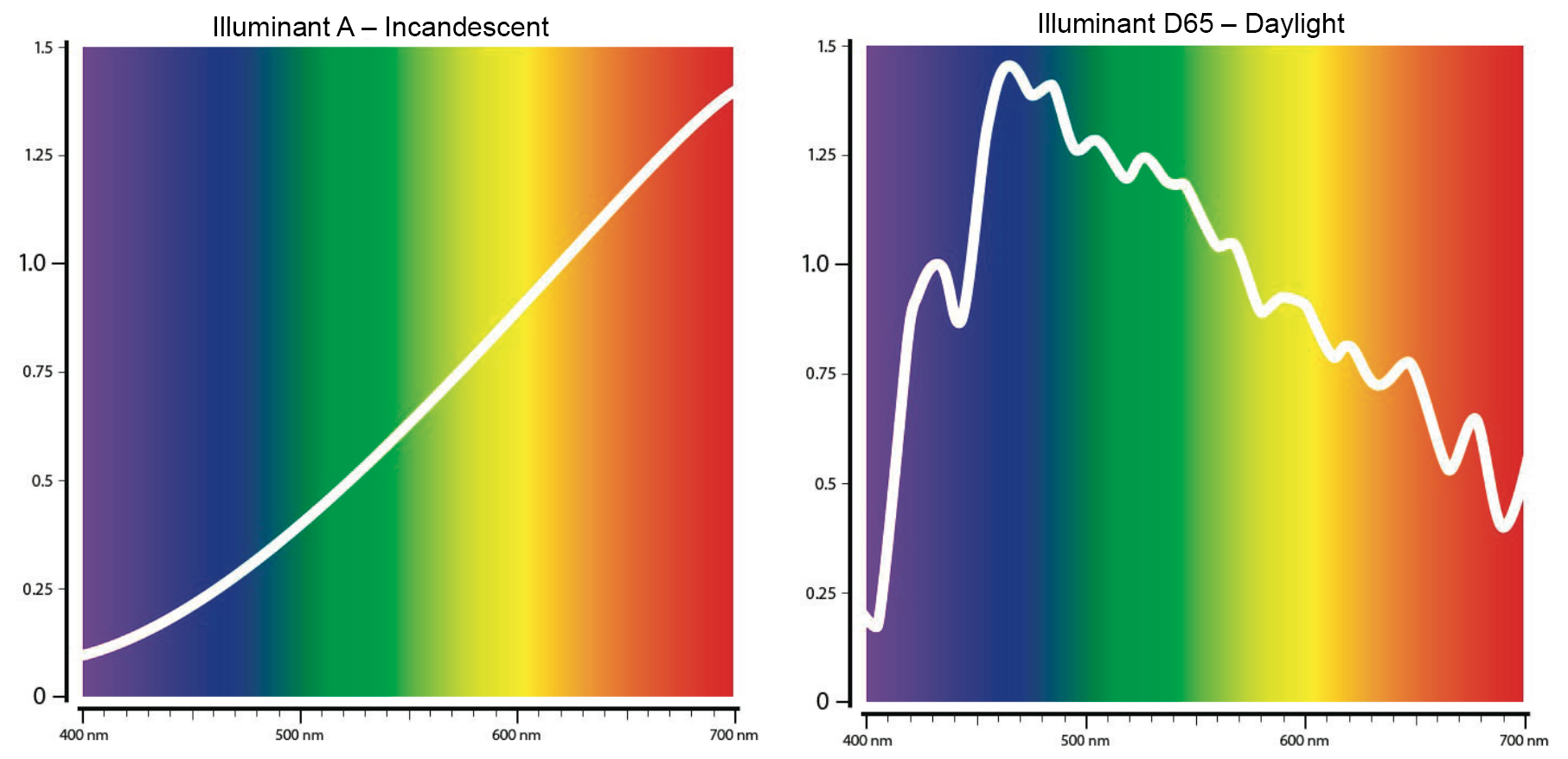Have you ever walked out of the house wearing two black socks, only to arrive at work and realize one of them is navy blue? If so, you’ve been a victim of metamerism.
Metamerism is a phenomenon that occurs when two colors appear to match under one lighting condition, but not when the light changes. Metameric matches are quite common, especially in near neutral colors like grays, whites, and dark colors like these. As colors become lighter or more saturated, the range of possible metameric matches becomes smaller.
To manage metamerism during color production, you need to know what causes it.
The science behind metamerism
The reason for this phenomenon lies in the light source and the way the object reflects that light to give us the perception of color.
Here are the reflectance curves for incandescent and daylight. Notice how incandescent has a lot of energy in the red area, but not much in blue. Because of the increased energy in the red area, objects illuminated by incandescent lighting appear redder than those under daylight, which peaks in blue.
Using a spectrophotometer, you can measure an object to see how much light is reflecting
at each point across the visible spectrum. The resulting reflectance data is that color’s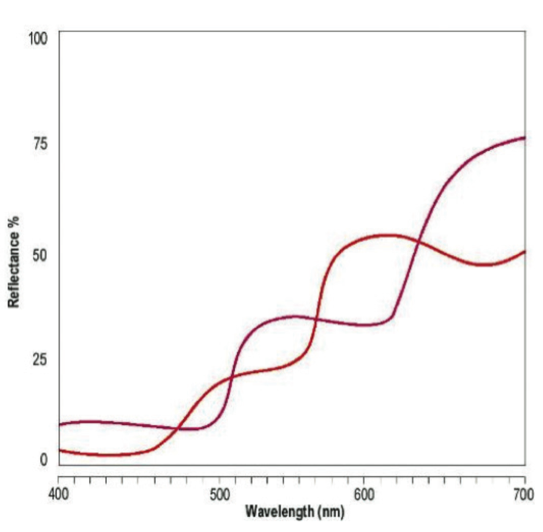 “fingerprint,” and can be used to create a reflectance curve. Metameric pairs are shades that
“fingerprint,” and can be used to create a reflectance curve. Metameric pairs are shades that
appear to be identical under a single specified lighting condition but actually have different fingerprints.
The graph on the right shows the reflectance curves for two reds. Both curves strongly absorb blues, both absorb greens in moderation, and both are pretty strong reflectors of reds. Notice how the curves are twisting over each other? Whenever two physical samples have curves that cross at least three times, they are a metameric pair. When objects are a metameric pair, metamerism is apparent and, although they will sometimes appear to be the same color, they will not match under all lighting conditions.
What causes metamerism?
Metamerism is common when a product is assembled using different materials. Automakers struggle with this phenomenon all the time. Even though the body paint is made from pigments different from those used on the bumpers and rear view mirrors, and the interior fabric is colored with dyes that are not anywhere near the fingerprints of the pigments used for the plastic dashboard, the assembled car has to match under virtually all types of illumination.
Fluorescent optical brighteners are also a common trigger for metamerism in papers, fabrics, and liquids. In this process, a chemical is added to absorb ultraviolet energy from below the visible and re-emit it energy at longer wavelengths to make the color appear whiter. OBAs can be difficult to manage and often cause metameric pairs.

Although these shirts appear to match under daylight, when you flip on UV light you can see that each of the pieces are actually metameric pairs.
Metamerism must be closely monitored when assembling parts from different suppliers, because any difference in colorant formulation or dying process will change the fingerprint.
What can be done?
- Use a spectrophotometer to capture and compare color fingerprints. This shouldn’t be the last step – measuring your colorants before they’re used in production to ensure they aren’t metameric pairs will save a lot of time and waste.
- Before evaluating products for shipment, use a light booth to evaluate colors under a variety of lighting conditions. Different fingerprints are OK as long as you verify the colors continue to match under every possible lighting condition.
- When dealing with different suppliers and manufacturers, standard operating procedures will set clear expectations and provide support if deliveries include metameric pairs.
Featured Color Management Solutions
Learn more about these featured products:
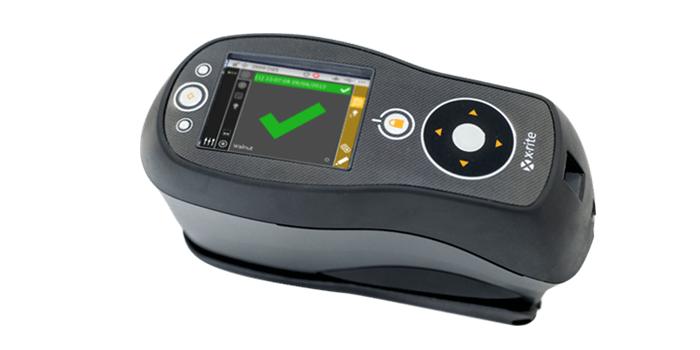
Ci64
The Ci64, X-Rite’s most precise handheld sphere spectrophotometer, is available in three models: with simultaneous SPIN/SPEX, correlated gloss, and a UV option.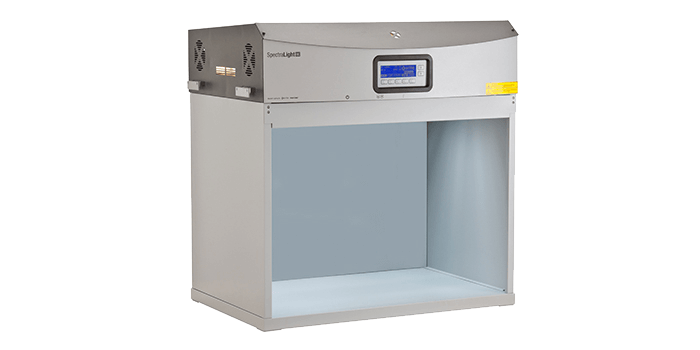
SpectraLight QC
The SpectraLight QC is the light booth of choice for color-critical visual assessment of large and small items under daylight and other lighting conditions; includes 7 light sources.
NetProfiler
NetProfiler is a cloud-based blend of software and color standards for verifying and optimizing performance of color measurement devices, reducing variance among instruments.Learn more about Lighting and Visual Evaluation
